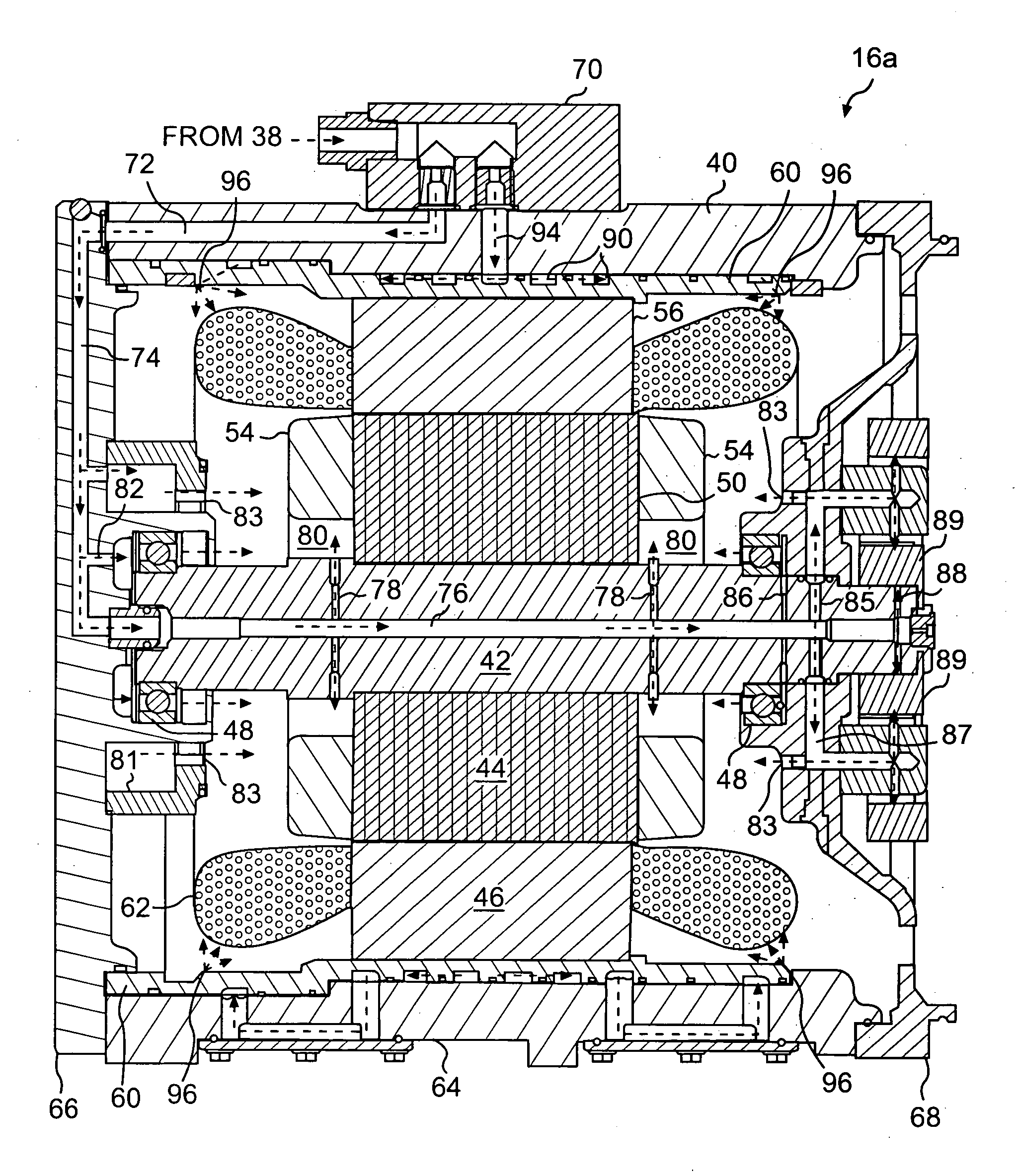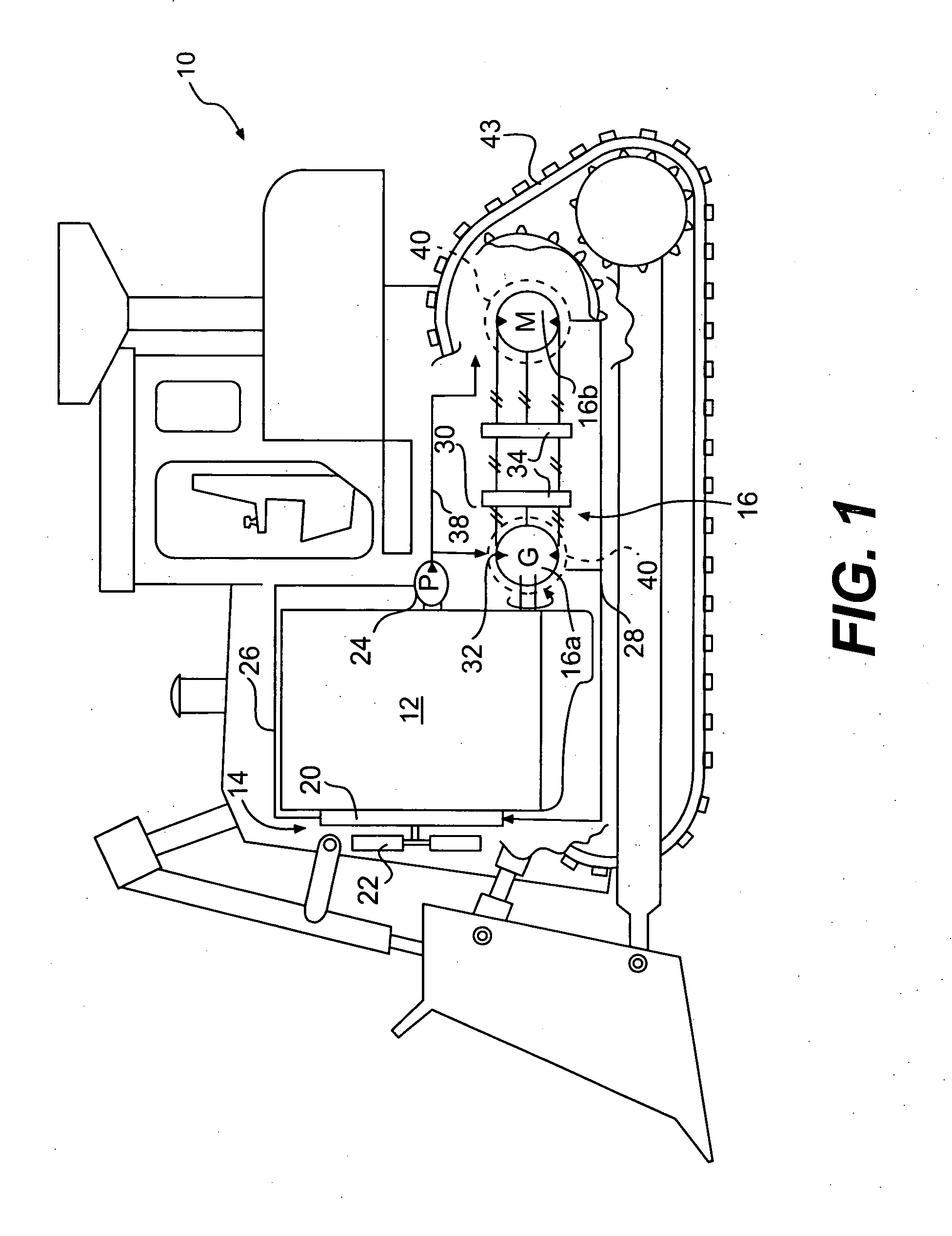Electric machine having a liquid-cooled rotor
a technology of electric machines and rotating parts, which is applied in the direction of magnetic circuit rotating parts, magnetic circuit shapes/forms/construction, electric devices, etc., can solve the problems of power output of electric machines, the capacity of electric machines to dissipate heat, and the removal of too little hea
- Summary
- Abstract
- Description
- Claims
- Application Information
AI Technical Summary
Problems solved by technology
Method used
Image
Examples
Embodiment Construction
[0011]FIG. 1 illustrates an exemplary power system 10 having a power source 12, a cooling circuit 14, and an electric machine 16. Power system 10 may form a portion of a mobile vehicle such as, for example, a dozer, an articulated truck, an excavator, or any other mobile vehicle known in the art, with electric machine 16 functioning as the main propulsion unit. It is also contemplated that power system 10 may form a portion of a stationary machine such as a generator set, a pump, or any other suitable stationary machine.
[0012]Power source 12 may include a combustion engine operable to produce a rotational mechanical output. For example, power source 12 may include a diesel engine, a gasoline engine, a gaseous fuel-powered engine, or any other type of engine apparent to one skilled in the art. It is also contemplated that power source 12 may alternatively embody a non-combustion source of power such as a fuel cell, a battery, or any other source of power known in the art.
[0013]Coolin...
PUM
 Login to View More
Login to View More Abstract
Description
Claims
Application Information
 Login to View More
Login to View More - R&D
- Intellectual Property
- Life Sciences
- Materials
- Tech Scout
- Unparalleled Data Quality
- Higher Quality Content
- 60% Fewer Hallucinations
Browse by: Latest US Patents, China's latest patents, Technical Efficacy Thesaurus, Application Domain, Technology Topic, Popular Technical Reports.
© 2025 PatSnap. All rights reserved.Legal|Privacy policy|Modern Slavery Act Transparency Statement|Sitemap|About US| Contact US: help@patsnap.com



